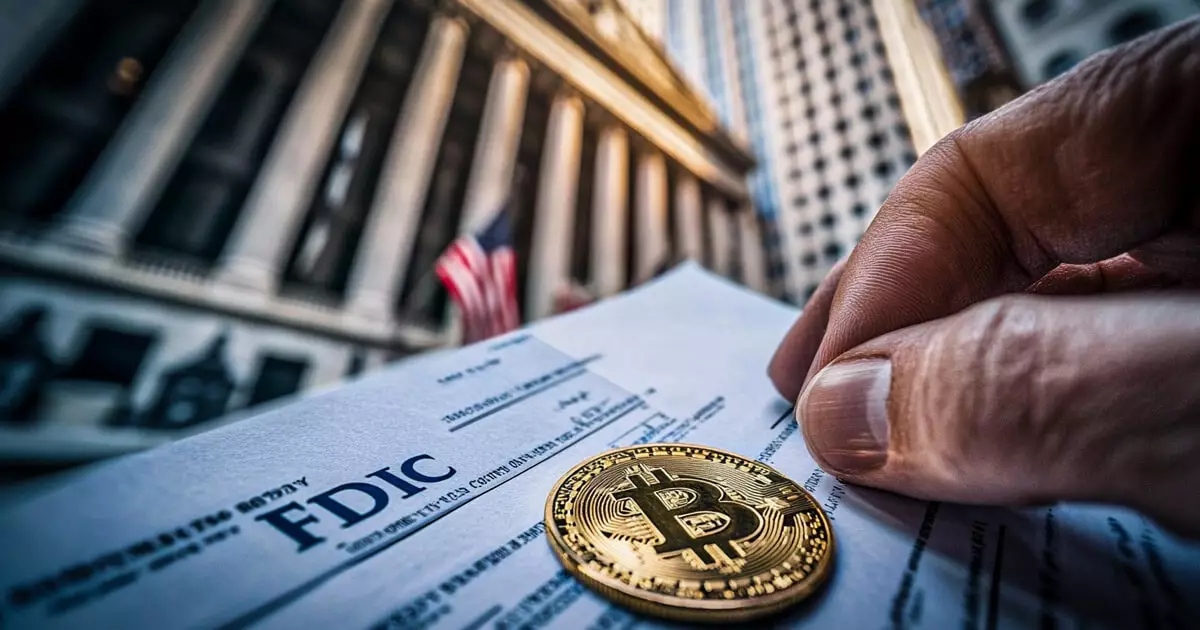On March 28, 2025, the Federal Deposit Insurance Corporation (FDIC) made headlines by dismissing its previous restrictions and signaling a new era for banks involved in crypto-related activities. The rescission of the Financial Institution Letter (FIL-16-2022) underlines a monumental shift in regulatory strategy, suggesting a more permissive stance that invites banks to explore the burgeoning field of digital assets without prior clearance from the FDIC. Acting Chairman Travis Hill’s remarks cement this view; he described the decision as a crucial move away from three years of what many have termed overregulation and an impediment to innovation.
This momentous change is not merely a technical update; it represents a broader acknowledgment that financial institutions need flexibility to stay relevant in an increasingly digital economy. By placing the onus on banks to manage risks rather than forcing them to seek external approvals, the FDIC signals a confidence in the ability of these institutions to uphold safety and soundness standards. This timely move could potentially invigorate a stifled market, allowing it to flourish through responsible innovation.
A Response to the Stifling Past
The previous approach taken by the FDIC, characterized by “pause” letters that discouraged banks from engaging with crypto, was often criticized. The crypto community alleged that these measures were part of an “Operation Chokepoint 2.0,” a strategy to suppress a burgeoning industry under the guise of regulatory oversight. This misalignment became evident as banks received informal directives during a critical growth phase for digital currencies. Hill’s acknowledgment of past failures in providing clear guidance suggests a critical introspection is finally underway at the FDIC.
As financial institutions strive for compliance, the lack of transparent and coherent regulatory frameworks had left many feeling disillusioned. Banks were often caught in a limbo of uncertainty, leading to unnecessary delays in offering innovative services that represent a shift in how money is transacted and understood. With this new guidance, there emerges a possibility of a flourishing crypto ecosystem that aligns with mainstream banking practices.
The Importance of Compliance Without Compromise
One of the most encouraging aspects of the FDIC’s new stance is its emphasis on compliance with the Bank Secrecy Act (BSA). Hill’s call to reconsider the implementation of the BSA is vital; the burden of compliance should not be a deterrent to accessing essential banking services. The existing paradigm often views compliance as a roadblock rather than a foundational element that can coexist with innovation.
By encouraging banks to explore new avenues such as tokenized deposits and blockchain-based frameworks, the FDIC lays the groundwork for a more responsive regulatory environment. This development holds profound implications not just for banks but for all stakeholders in the financial landscape, including consumers eager for more choices in their banking options.
Aligning Regulatory Agencies
In parallel with the FDIC’s revised guidelines, the agency has signaled its commitment to working closely with other regulatory bodies, including the U.S. Securities and Exchange Commission (SEC). This collaborative effort is essential for establishing a consistent landscape for digital asset regulation. Lawmakers and industry participants have long called for symmetry in the guidance offered by financial regulators; the FDIC’s actions could serve as a rallying point for this alignment.
Such collaboration can help dismantle the barriers that have previously hindered the growth of the U.S. crypto market. The involvement of various regulatory agencies in creating a streamlined, transparent, and fair framework is not just beneficial but imperative to avoid confusion and regulatory arbitrage that could ultimately harm consumers.
The Road Ahead for Crypto Adoption
The FDIC’s bold new approach symbolizes a much-needed reinvigoration of innovation within the financial sector. By fostering an environment where banks can actively engage with crypto and blockchain technology, the potential for widespread adoption grows stronger. This shift not only has implications for institutions but also carries the promise of enhanced services for consumers, from faster transaction speeds to more democratized financial services.
Ultimately, this new direction provides a glimmer of hope for an industry that has faced numerous headwinds due to indecisive regulatory stances. The United States, perhaps, is on the brink of emerging as a global leader in digital finance, contingent on how regulators choose to facilitate or stifle growth in the coming years. As we embrace this transformation, one cannot help but feel that the FDIC’s new guidance may indeed have sent a powerful message: the future belongs to those who are willing to innovate responsibly.


Leave a Reply